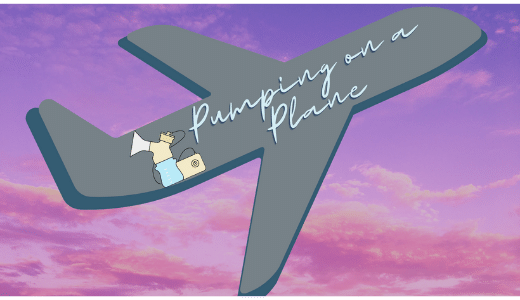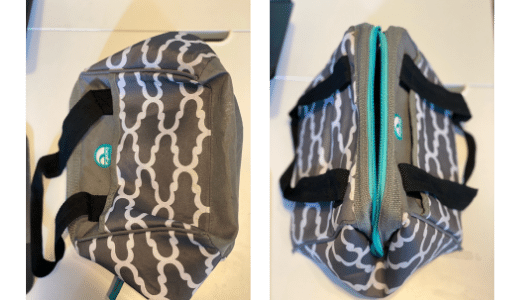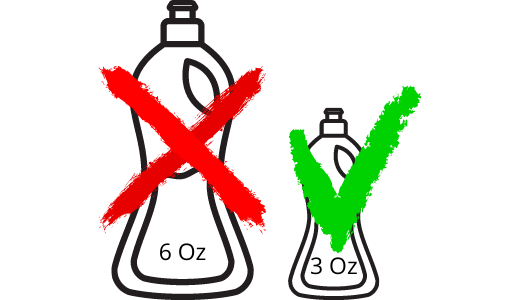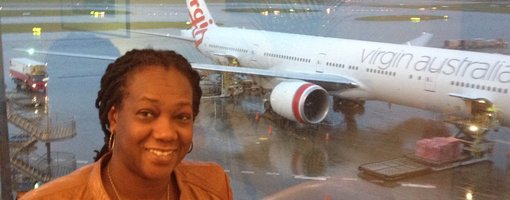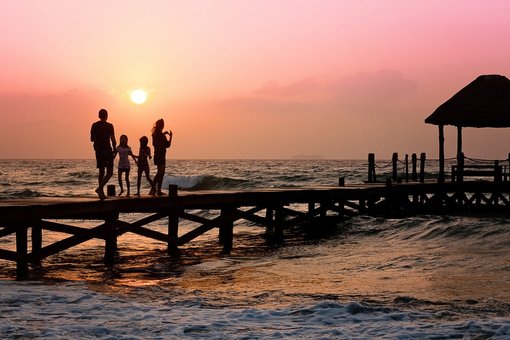Being a breastfeeding mom while traveling for work puts you in some interesting situations. What do you do when you are on a 6-hour flight but need to pump every 4 hours? What equipment should you take with you and how do you pack it? What is allowed through TSA and what isn't? How the heck do I get all this milk home with me?
These were all things that I didn't know the answer to when I started traveling while breastfeeding my second child and had to re-learn with my third. Some of it – what's allowed through TSA and ideas on getting milk home – can be found on various websites if you know where to look. The rest of it is pretty much trial and error.
So, as someone who took about 6-7 trips per child while breastfeeding, allow me to impart the wisdom I have learned along the way.
Packing and Prep
On the first trip I took I brought my electric pump in my carry-on. I took it out of its big cumbersome bag and tucked it into my bag, cushioned by a sweater. It was hard to get in and out due to all the work stuff I had in that bag, but the biggest problem came when it came time to use it. Where was I going to plug this thing in? Nowadays, a lot of airports have mother care rooms or Lactation Pods, but 7 short years ago they were scarce. I managed to find a single-use accessible bathroom that had a plug but it wasn't near the sink so I had to awkwardly stand, hold the motor and pump.
So, tip #1: Invest in a manual hand pump. It doesn't have to be big or expensive, just find one that is comfortable for you and can easily be tucked into your bag. I still packed the electric pump (well-cushioned) in my luggage for use in my hotel room, where there are plugs aplenty. Added bonus: this little pump also comes in handy if you're out and about during your trip (or even during a night out when you get home!).
Tip #2: Bring an insulated collapsible lunch tote. This is the one I used through both experiences. It folds flat for easy packing before use and expands to pack a surprising amount of storage bags. Get a good soft ice pack (the hard plastic ones don't pack as well) to have in there.
Collapses to easily pack in my carry-on or checked luggage. Expands to hold a surprisingly large amount of milk bags.
Tip #3: Plan your schedule but be prepared to adjust. “Ok, so if I pump right before I leave the house, it takes 20 mins to get to the airport, about 45 mins to get from the entrance to gate and boarding starts an hour after that…I have to pump RIGHT before getting on the plane then 3-hour flight and I can pump at the airport before getting in the cab….” It sounds great in your head, but what happens if the line at TSA is extra-long, or traffic is so bad you are almost late to your plane? What happens if your flight is delayed or sitting on the runway for hours? You know your body and how long you can go, or if you can do it a little earlier than planned to fit into a specific window. Make sure you have your contingency plan in mind if something goes awry.
Going through TSA
First of all, and I can't stress this enough, always double-check TSA's website as policies can change. That being said, here is my experience getting through TSA. For the most part, it's easy and without incident as long as you are properly prepared:
Tip #4: Have your cooler bag out of your carry-on and ready for separate screening. Let the TSA agent know up front that it is breastmilk in your bag. They will pull it aside after the X-Ray and do a separate test. They wipe the breastmilk bags with testing strips but do not open them or disturb the contents of the bags themselves.
Tip #5: Bring the right size soap. I used to bring the Palmolive Pure + Clear in my carry-on. The small bottle was 6 oz, which for almost all of my trips got through. Until it didn't. There will inevitably be the one agent that is hard and fast on the 3oz rule and you can't really (and shouldn't!) argue with them. So that bottle went in the trash and I had to take a trip to the convenience store as soon as I got to my destination to purchase more.
The Long Haul
For shorter flights, you can usually plan around the flight – pumping at the airport before take-off and potentially upon landing- however, if you're heading cross-country or overseas, chances are you are going to have to pump on the plane. The first time this happened, I had planned to go hide out in the bathroom; the small, cramped, stinky bathroom. Luckily for me, a flight attendant saw where I was headed and stopped me. She let me sit in her jump seat and closed the curtain to provide me with privacy.
Tip #6: Don't be afraid to ask for help. Flight attendants have seen it all and are happy to help when they can. If you know you are going to have to pump, ask them if there is a more private space to do it. If you don't have a cover-up and want a little more privacy, ask if they can provide a blanket. Also, if you're not sure your ice pack can make it that long, bring a zip-lock bag with you and ask the flight attendant to fill it with ice.
Sometimes you luck out and have a little more space and no one is in the seat next to you. This happened on one of my trips – I was in an aisle seat, someone was in the window seat, but no one was in the middle seat. With this extra room, I felt comfortable to use my jacket as a cover-up and pump right from my seat. Therefore Tip #7: You don't have to run to the bathroom to pump. As long as you are covered, no one cares or really even notices what you're doing, so why not be comfortable while you do it.
Storing and Getting Your Milk Home:
Now you've made it to your destination, you need a way to store your milk,
Tip #7: Request a fridge for your room. Some hotels have fridges in their rooms, but others don't. I worked at a hotel that had weight a sensor minibar fridge which charged you as soon as you moved anything. So if you see stuff in the fridge, make sure you ask if they can clear it out for your stay or for them to bring you a separate one. Be sure to tell the hotel what it is for, as there may be charges for a fridge unless it's for medication or breastmilk.
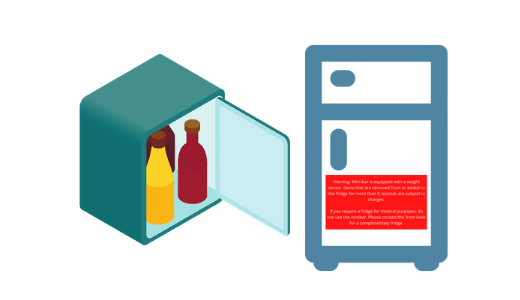
What do you do if you have to check out by noon but you have a late afternoon/red-eye flight? Tip #8: Ask for help. Yes, this is a repeat tip, but in a different context! Talk to the front desk agent about options they can provide. I have had a hotel store my milk – in my lunch bag- in their fridge. This one is a little tricky, as there are health code concerns so don't expect they can keep it in their restaurant fridge, but there is generally a fridge onsite they can use. I also asked if there was a private space I could use to pump before I left. Usually, they can let you use an unused board room, staff room, or hospitality suite.
Tip #9: Prepare yourself to not bring it home. For many of my trips, I was able to bring home my milk in my roomy lunch tote. There was one event that was longer than others (6 days) and I wasn't going to be able to carry it all home not to mention the milk wouldn't stay good without freezing for that long. I decided instead of dumping my hard-earned milk, I would ship it home about ½ way through my trip then carry the rest as usual. This, I found out, was a very expensive decision. Between the Styrofoam box, the cooling options (regular icepacks aren't going to cut it), and the actual shipping costs (that much milk is HEAVY) it cost me over $80. For later lengthy trips, I opted to simply ‘pump and dump' for the first few days. Heartbreaking as it was, I decided that was the right decision for me.
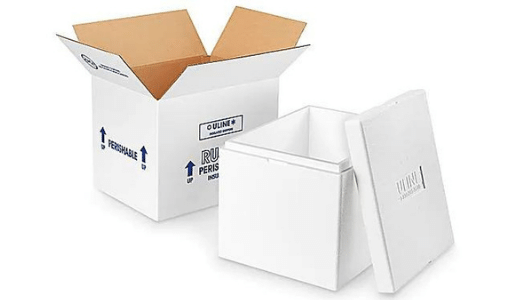
The insulated box I used to ship home my milk.
At the end of the day, these are the things that worked for me. Everyone and every body is different. Many of these tips are dependent on your comfort level and what your body tells you. The biggest thing I hope you get from this is that preparation is important and it's ok to ask for help along the way.
If you have any questions or you want to share your own experiences or tips, comment below!
